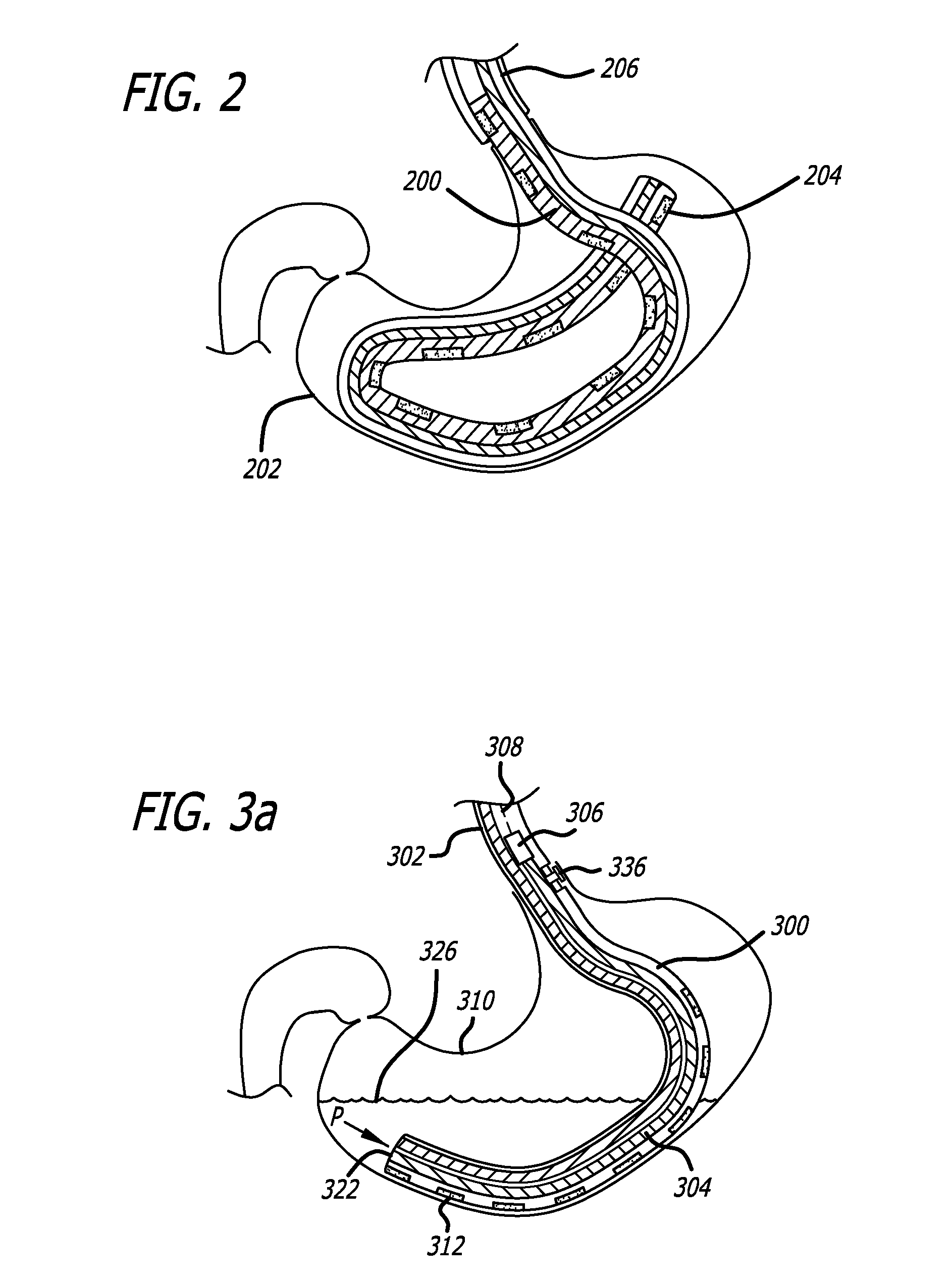Ng tube with gastric volume detection
a gastric volume and tube technology, applied in the field of ng tube with gastric volume detection, can solve the problems of patient's bowels eventually shutting down for lack of use, unable to aspirate stomach contents, and unable to meet the needs of patients,
- Summary
- Abstract
- Description
- Claims
- Application Information
AI Technical Summary
Benefits of technology
Problems solved by technology
Method used
Image
Examples
Embodiment Construction
in conjunction with the accompanying drawings that are first briefly described.
BRIEF DESCRIPTION OF THE DRAWINGS
[0015]FIG. 1 illustrates an exemplary enteral tube with an integrated GRV detection sensor inserted into a patient.
[0016]FIG. 2 is an illustration of an exemplary enteral tube with a GRV detection sensor which is flexible and long enough to be looped around within the stomach.
[0017]FIG. 3a is an illustration of an exemplary GRV detection sensor including a sealed air column terminating with a flexible membrane.
[0018]FIG. 3b is an illustration of an exemplary GRV detection sensor including a sealed air column terminating with a flexible and bulbous diaphragm.
[0019]FIG. 3c is an illustration of an exemplary GRV detection sensor including a plurality of fluid detection circuits, each fluid detection circuit including a photodiode and phototransistor pair surrounding a tube or chamber that is open at either end.
[0020]FIG. 4 is an illustration of an exemplary enteral tube inclu...
PUM
 Login to View More
Login to View More Abstract
Description
Claims
Application Information
 Login to View More
Login to View More - R&D
- Intellectual Property
- Life Sciences
- Materials
- Tech Scout
- Unparalleled Data Quality
- Higher Quality Content
- 60% Fewer Hallucinations
Browse by: Latest US Patents, China's latest patents, Technical Efficacy Thesaurus, Application Domain, Technology Topic, Popular Technical Reports.
© 2025 PatSnap. All rights reserved.Legal|Privacy policy|Modern Slavery Act Transparency Statement|Sitemap|About US| Contact US: help@patsnap.com



